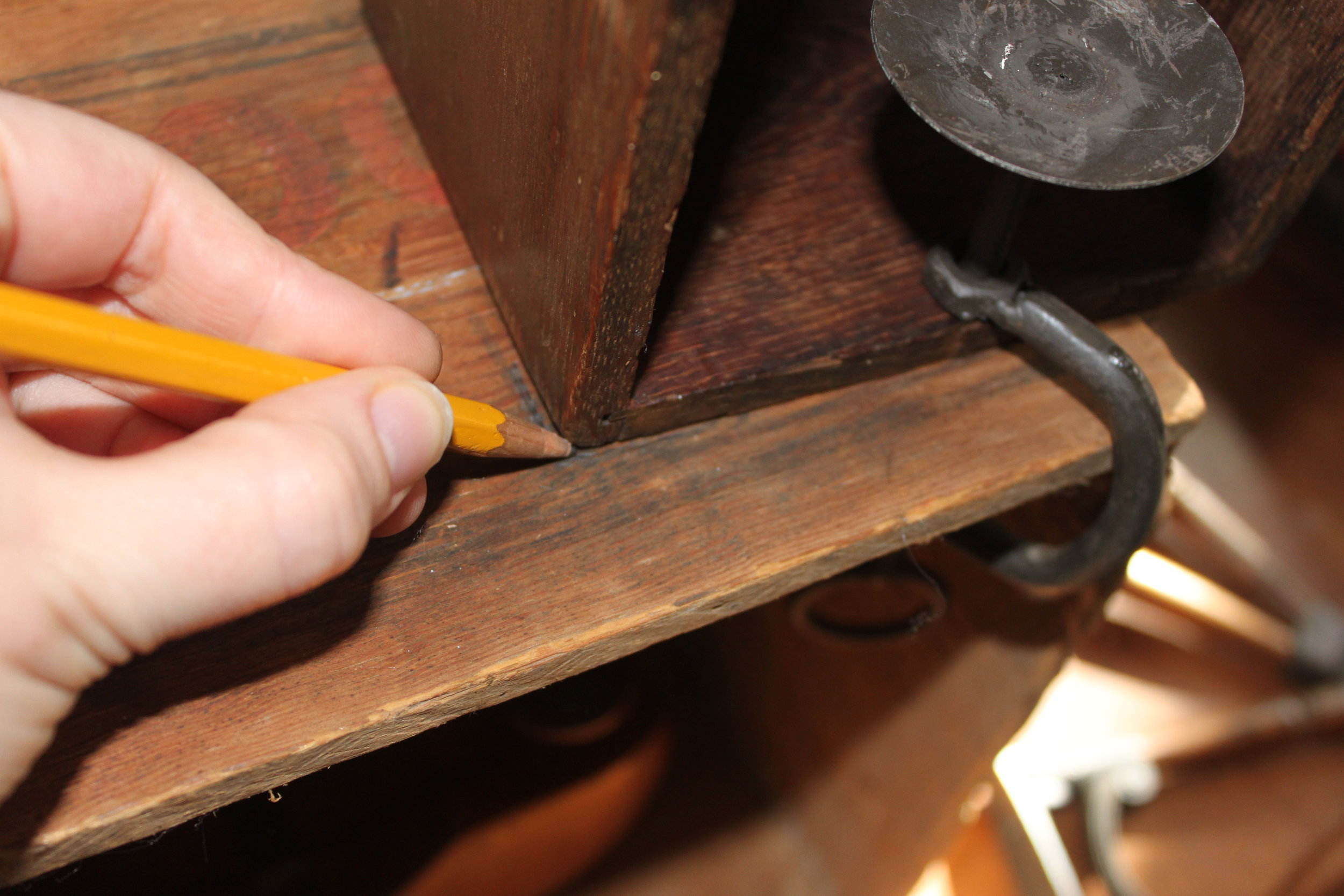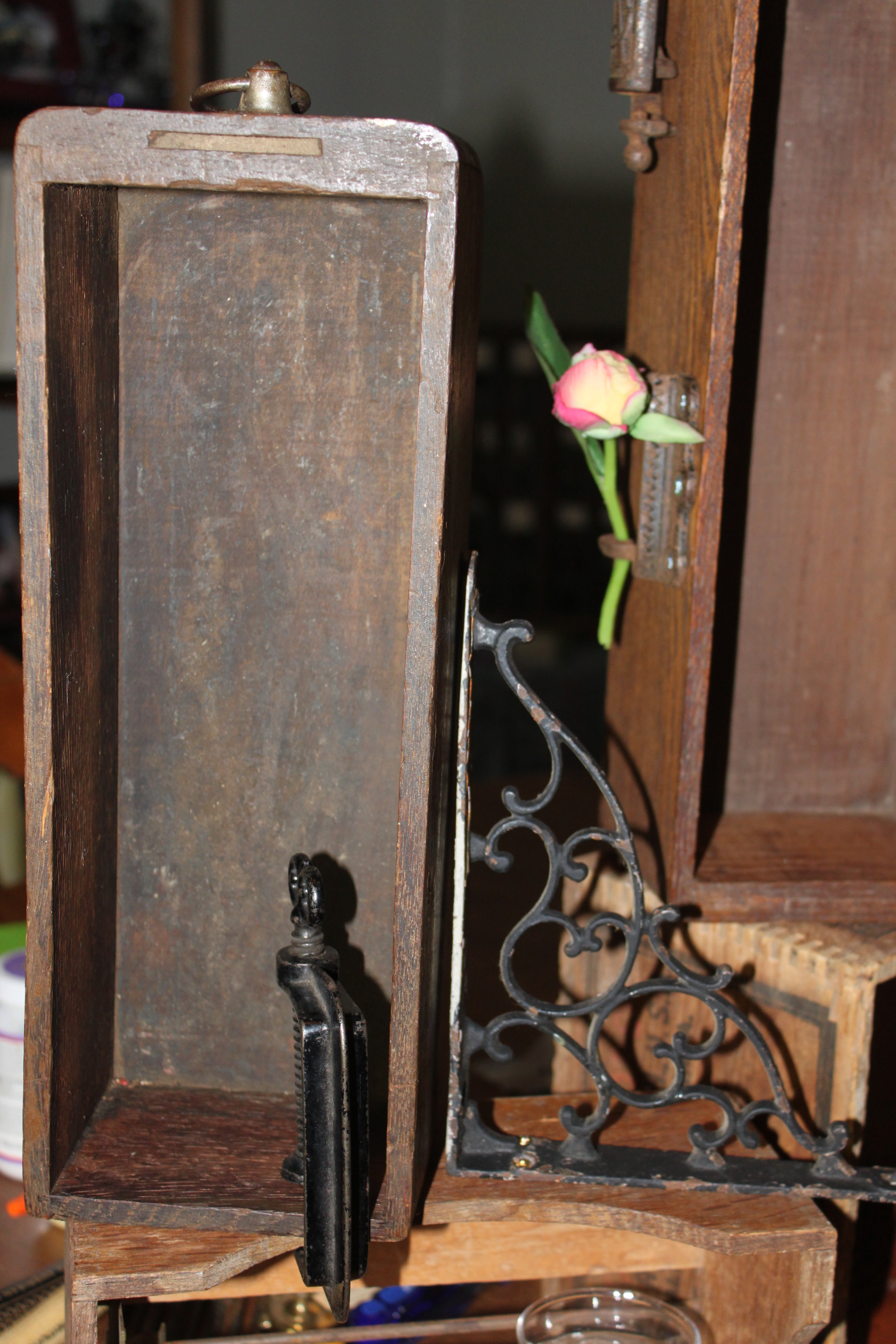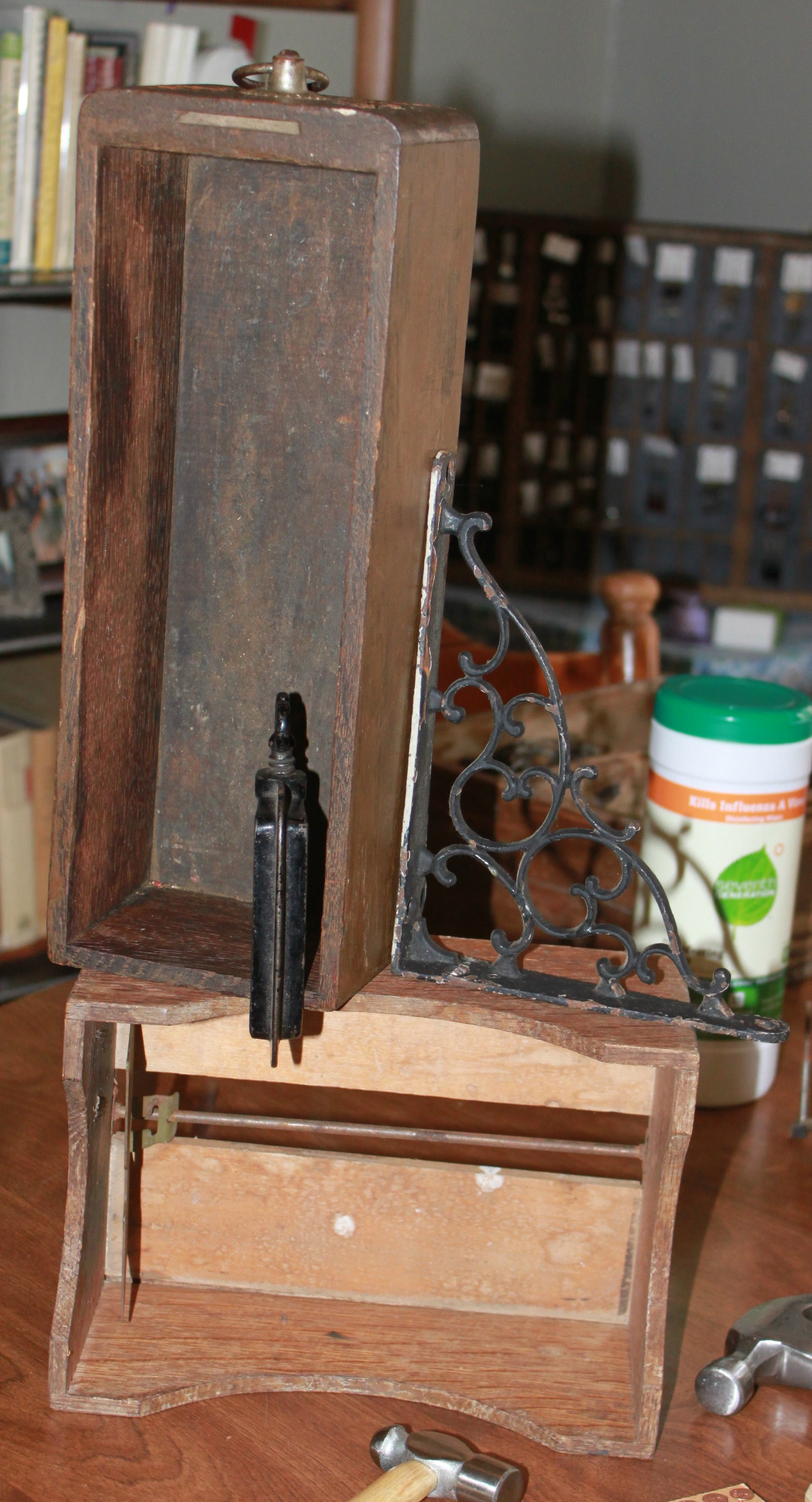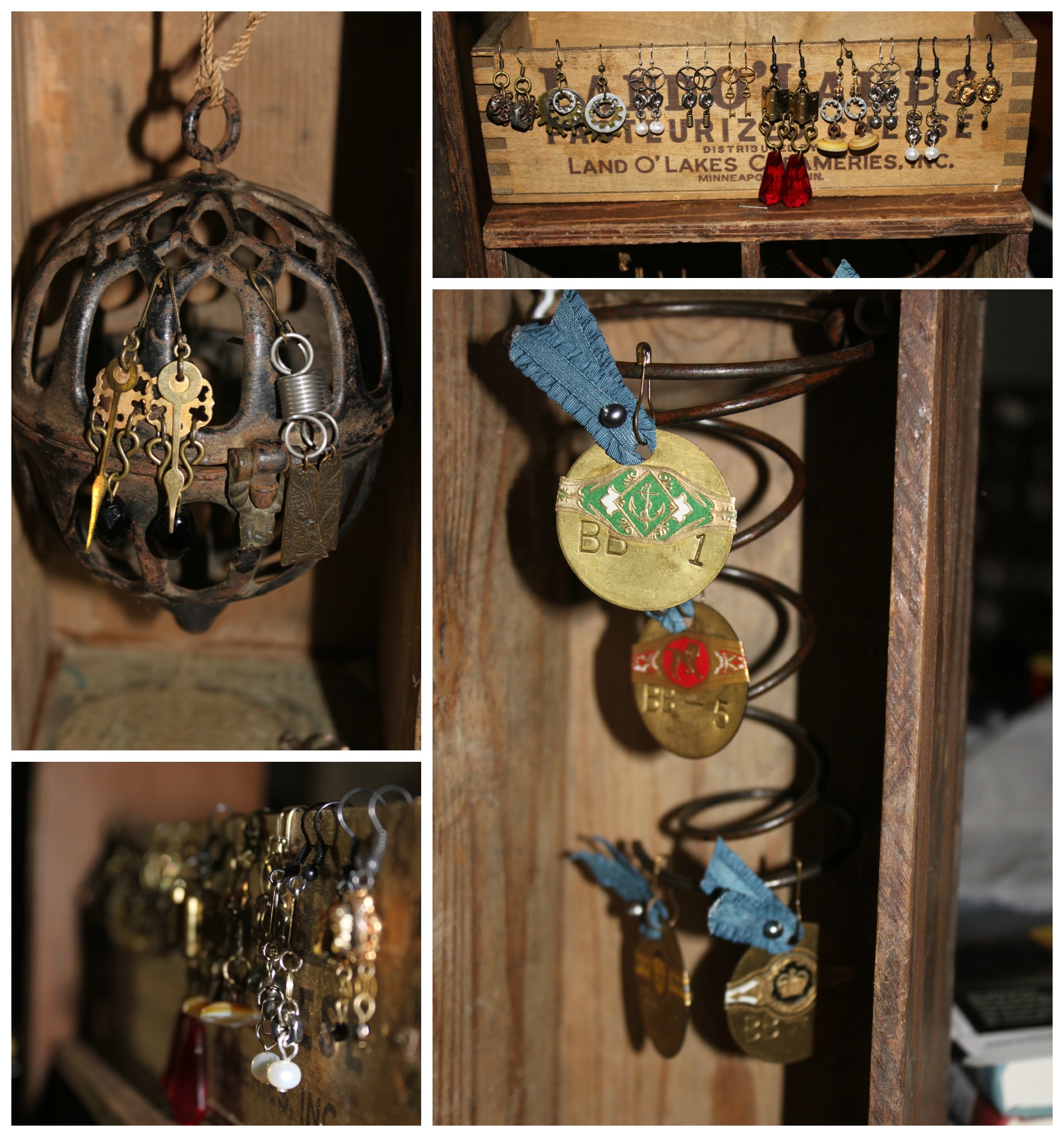If you have a steampunk crafty business, or perhaps an old-timey aesthetic, your booth should convey the feeling of your products. This is something I feel that I do quite well and I am quite proud of. Many people stop by my booth just to look at the curiosities inside. This is the second in a series of 3 blog posts on how to recreate 3 of my newest displays for yourselves! Too see Style No. 1, click here. For Style No. 2, read on!
What You'll Need: 2 boxes (1 large and 1 small); 2 screws; drill & screwdriver; Murphy's Oil; medium-large cup hooks, as many as preferred; awl; c-clamp; and decorative metal bracket
A Note on Where to Find Boxes: Flea Markets; Garage Sales; Antique Malls; and ReStores (which benefit Habitat for Humanity)--Look for sewing machine drawers & old produce crates especially. Avoid any boxes with mold, badly split sections of wood, or water damage. They will not be as structurally sound and may break with minor hammering.
Instructions:
- Clean your boxes with soap and water (be careful not to soak your boxes). Shine them with a little bit of Murphy's Oil. Let dry completely.
- Place your sewing drawer (or small box) and metal bracket where you'd like them. Mark with pencil where you need to screw your metal bracket in place. Also, mark the corner of your sewing drawer so if you choose for it to be removable you can place it back in the same spot. (I would suggest making your drawer removable because when you transport these kinds of displays, they can shift and it is much easier to adjust a c-clamp than having to re-screw the box on location).

- Clamp your sewing drawer to your large box with your c-clamp.

- Next, make starter holes in your large box for your screws. If your box is oak or another hard wood use a drill rather than your awl. And vice versa for a more pliant or less sturdy wood.
- Affix your metal bracket to your large box with your screws.
- Last, make starter holes on your display where you'd like to place your cup hooks. Screw your cup hooks in.

- Hang your jewelry with pride!










